A rash of unusually colorful sunsets follows in the wake of two major volcanic eruptions.
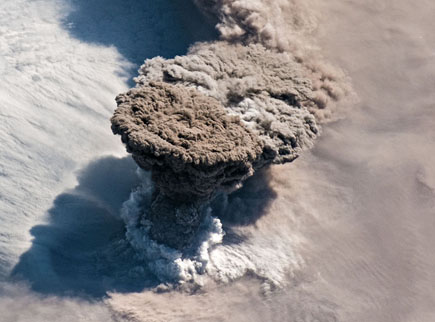
NASA
Several evenings ago I noticed an intense purple-pink glow in the western sky about 15 minutes past sunset. I hadn’t seen that color in a long, long time. Could a volcanic eruption be the cause? Volcanoes are known to seed the stratosphere with ash that intensifies sunset colors.
Checking, I learned that the Raikoke volcano in the Kuril Islands and the Ulawun volcano in Papua New Guinea each had blasted gases and dust more than 18 km (11 miles) high on June 22nd and August 3rd, respectively — high enough to penetrate the stratosphere. My hunch proved correct!
Air molecules, along with the tiniest dust particles and some aerosols, scatter blue and violet light from the Sun's white light to color the sky blue. Violet is scattered the most, and if our eyes were as sensitive to this color as they are to blue, the daytime sky would lean toward violet. Scattering redirects the shortest wavelengths in sunlight into billions of slightly different directions, diffusing it to produce the familiar blue sky.
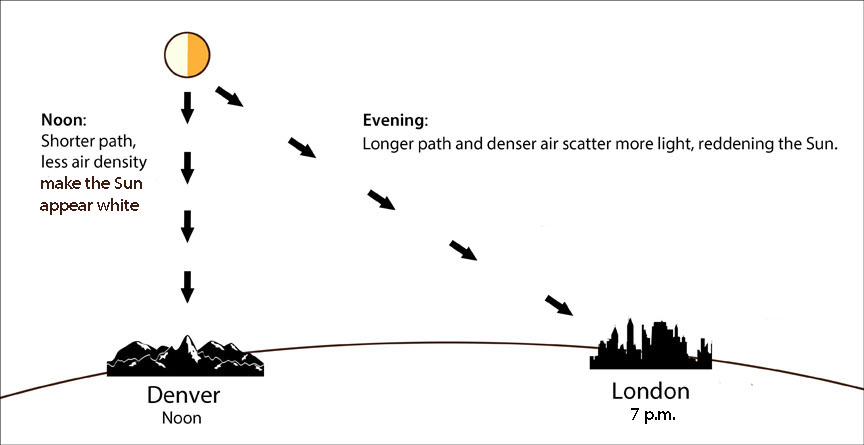
Bob King
At sunrise and sunset, sunlight takes a much longer path through the atmosphere and passes through far more air than usual, up to 40 times the amount compared to its summer noon position. Further, that air is far denser because it's at the bottom of the atmosphere where both air and aerosol densities are greatest. More scattering results, with both blue and green removed from the solar spectrum. A now deeply-reddened Sun illuminates clouds, trees and faces in warm hues like a spotlight shining on a stage.
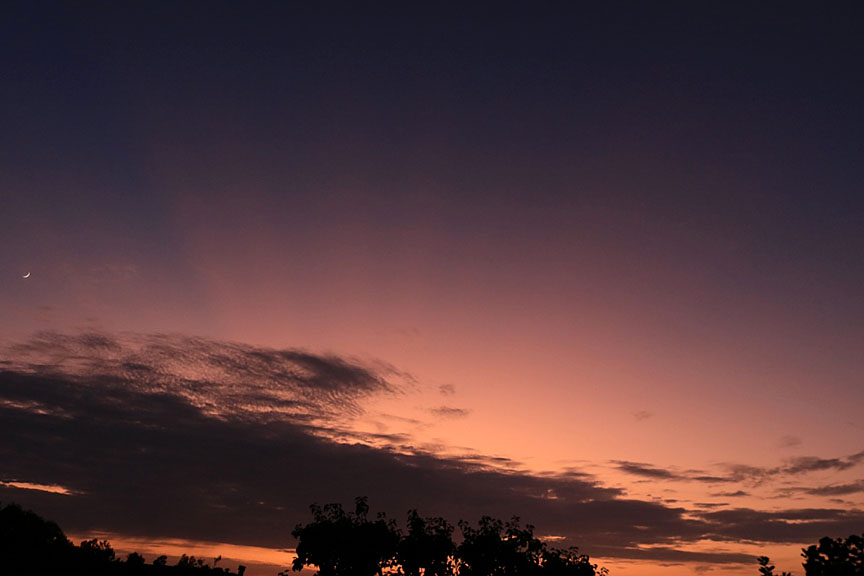
Thom Peck
Volcanic dust high in the stratosphere, where the Sun shines for a short time after it has set for the troposphere (the lowest layer of the atmosphere), also scatters blue light. Mixed with the predominately red and orange light present in the lower atmosphere, the twin glows combine to create a diffuse purple veil in the western sky at sunset or in the east at sunrise.
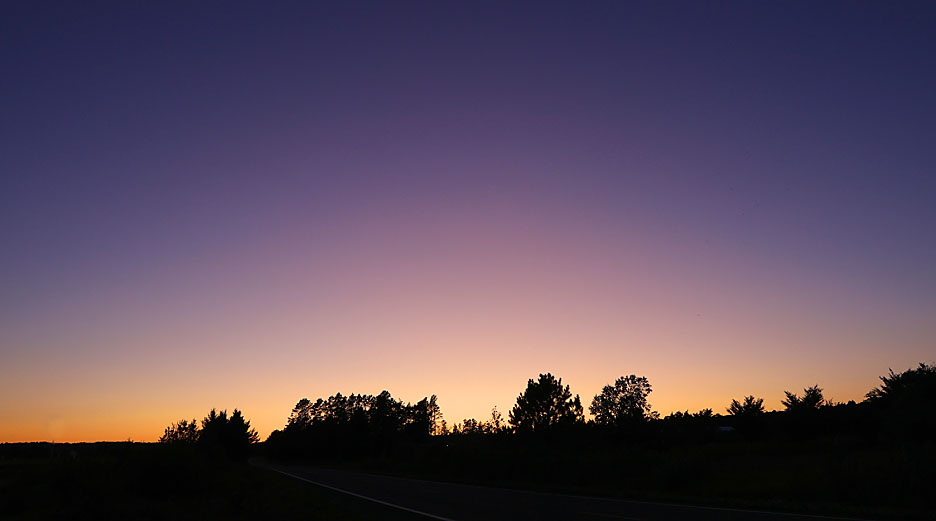
Bob King
On August 28th, I drove to an open field and watched the western sky starting at sunset. A pale, pinkish-orange blush about 30° high (three fists) appeared over the sunset point 10 minutes after sundown. It deepened to a vivid, rosy-purple glow about 30° across that reached greatest intensity 15 minutes after sunset. Closer to the horizon the sky glowed the color of ripe cantaloupe fruit. Straining my eyes, I could see faint striations nearer the horizon which I interpreted as translucent bands of volcanic dust.
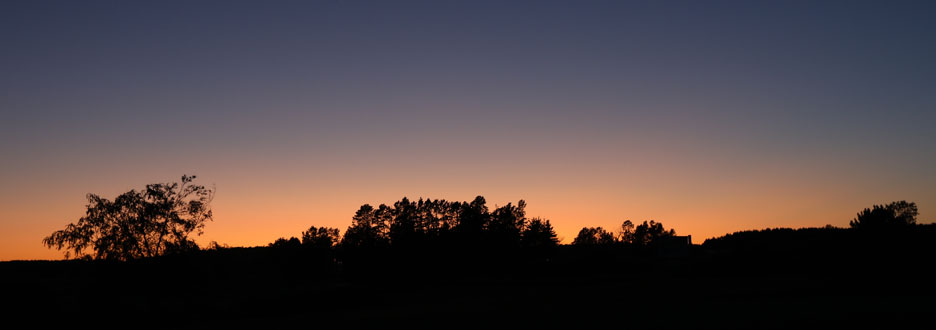
Bob King
The brevity of the purple light surprised me — 20–25 minutes after sunset it had all but disappeared. But the orange-pink light of tropospheric twilight, mingled with a hint of stratospheric aerosols, still lingered within 15° of the horizon. All told it was a half-hour of pure gorgeousness. I encourage you to look for the purple light over your neighborhood at the next sunset or sunrise. The sight is easy to capture on a mobile phone, and binoculars may show signs of ash layers. The phenomenon is widespread. Searching online in recent days I've seen photos and heard reports from Ohio, Kansas, Arizona, California, and Canada.
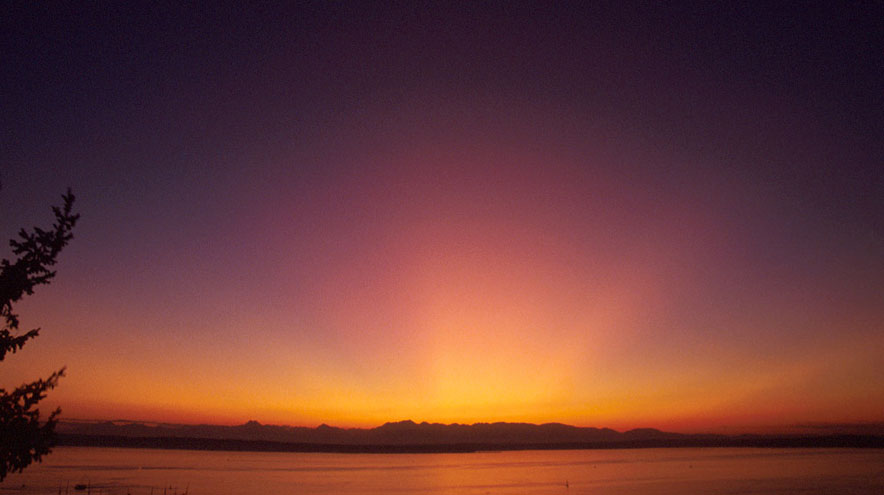
Bob Harrington
One of the longest lasting ash-aerosol events occurred in the wake of the Mount Pinatubo volcano which erupted on June 15, 1991. According to the Aerosol Research Branch of NASA's Langley Research Center, the eruption "increased aerosol optical depth in the stratosphere by a factor of 10 to 100 times normal levels measured prior to the eruption." Aerosol optical depth is a measure of how much light airborne particles prevent from passing through a column of atmosphere.
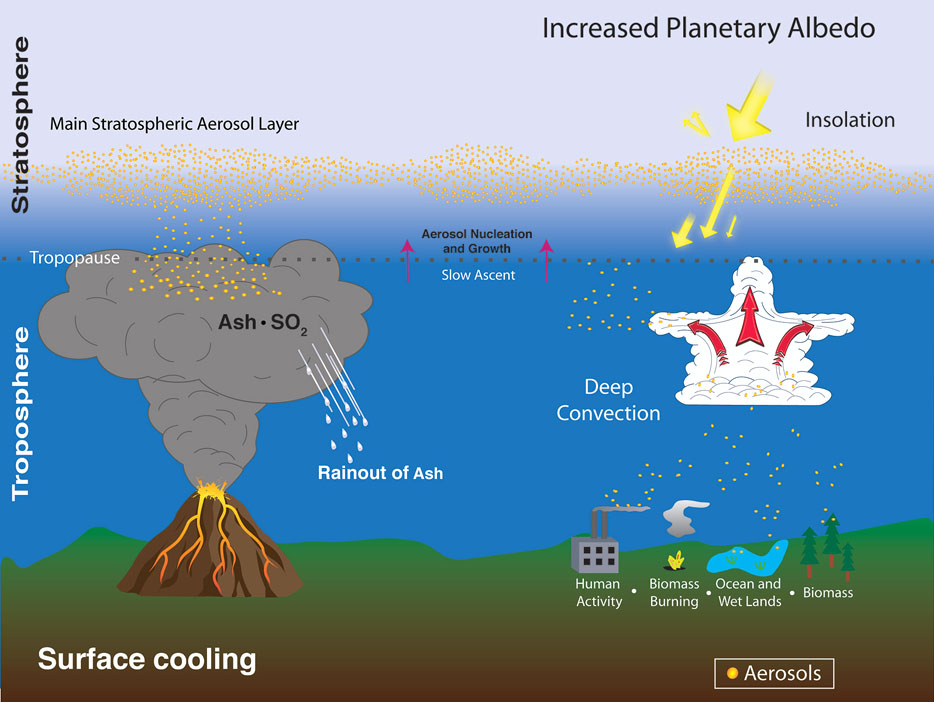
Kristina Ruhlman / NASA
Twilight effects lasted more than two years, and the millions of tons of debris in the atmosphere filtered the light of celestial objects for a similar amount of time. I recall not being able to reach my normal limiting magnitude for years until the dust cleared. Fred Espenak, astrophysicist and eclipse chronicler, called the December 9, 1992, total lunar eclipse the darkest in a decade. Whether we'll experience a noticeable change in sky transparency this time around remains to be seen.
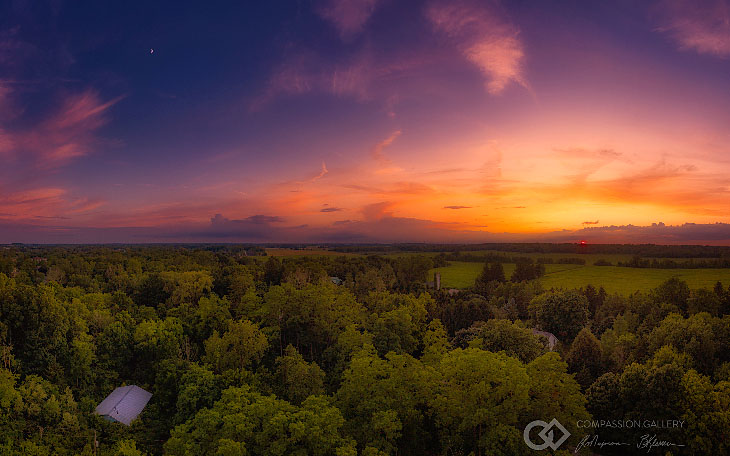
Ray Marjoran
In nature, great power often creates scenes of great delicacy. Just as the terror of a supernova sculpted the tendrils of the Veil Nebula, so too these recent ruptures in Earth's crust have inspired jaw-dropping twilights.
 9
9
Comments
Walter Clayton
September 4, 2019 at 10:54 am
El Chichón in Mexico made Astronomy almost impossible for 2 years at least, back in 1982 (at least here on the southeast coast).
Pretty sunsets, opaque skies.
Walter Clayton
s/v Always Home
You must be logged in to post a comment.
Bob KingPost Author
September 8, 2019 at 11:45 am
How true, Walter. I remember that time well. As far as I can tell transparency is still good so far in the wake of the current volcanoes — at least from N. Minn.
You must be logged in to post a comment.
Akram
December 12, 2019 at 10:47 pm
I have a question for you..Of a very huge volcano erupt can we see the light of the eruption from 1000km??
You must be logged in to post a comment.
Anthony Barreiro
September 4, 2019 at 3:12 pm
This past Saturday September 1 my astronomy club visited Lick Observatory on Mount Hamilton, east of San Jose California. The weather was clear, calm, and dry and we saw a gorgeous sunset over the coastal mountains and the top of the marine layer. Just as you describe, the sky was purple above the gold and orange over the horizon. The very young waxing crescent Moon was hanging in the purple, reflecting earthshine.
Once the sky got dark we got to look through the 36 inch refractor at M57, M56, and Albireo. Quite a nice night, although I wish they could have pointed the telescope at Saturn! For public observing they keep the telescope pointed close to the zenith, so visitors don't have to climb a 40 foot ladder to get to the eyepiece.
You must be logged in to post a comment.
Anthony Barreiro
September 4, 2019 at 5:17 pm
Whoops. It was Saturday August 31.
You must be logged in to post a comment.
misha17
September 4, 2019 at 4:49 pm
Couple of thoughts from out here in Los Angeles:
1. Over the weekend I was driving south on the Freeway in the late afternoon and saw what I thought was wisps of smoke "clouds" from wildfires off to the south. Definitely not cirrus, and too high for the evening stratus fog. I didn't see any "base"/origin to the "clouds," and I didn't hear anything on the new about any fires and didn't think much of it after. In the past I've seen smoke wisps in the sky from fires as far north as Central California, and the ones I observed looked similar.
2. This morning I had to take the dog out for a walk around 4:45am. The eastern horizon was already beginning to brighten - reaching as far up as Sirius. I checked later and found out sunrise was not scheduled to occur until 6:30am. The "twilight" was brighter and had a different quality (blue rather than white) than the brightness that city lights give to the horizon.
You must be logged in to post a comment.
Bob KingPost Author
September 8, 2019 at 11:46 am
Hi Misha,
Sounds like you're seeing the effects. If you're out at the right time it's quite obvious.
You must be logged in to post a comment.
Tom-Reiland
September 4, 2019 at 6:54 pm
Thanks for another informative post, Bob. You solved a strange observation that I experienced last Thursday morning, Aug 29. I went out into my backyard to scan the constellations in the Eastern sky with my 10 X 50 Binoculars. Every celestial object was blue to blue-violet. The bright stars were blue to my nude eyes. (Some of us us nude because naked sounds so dirty : ) ) I remember the strange skies in the early 1980s and the conditions in the 1990s caused by Mt Pinatubo. I observed blue and green lightning during storms. All very fascinating, though it did cut down on transparency. I have noticed that I cannot faint objects that I was able to see several months ago. One recent night that appeared to be very transparent, I could not see the central star in M57. It's usually not very difficult on good nights at Wagman Observatory. I'm glad that this didn't happen two to three years ago when I was finishing my observations of the Herschel Catalogue. I hope it dissipates soon.
You must be logged in to post a comment.
Bob KingPost Author
September 8, 2019 at 11:47 am
Thanks, Tom! By the way, you are the first to report transparency issues possibly due to volcanic dust. Nude eyes are good by me 🙂
You must be logged in to post a comment.
You must be logged in to post a comment.